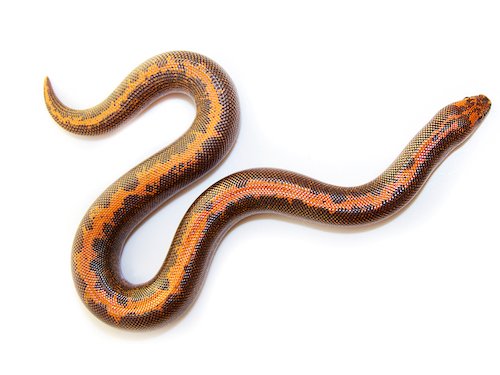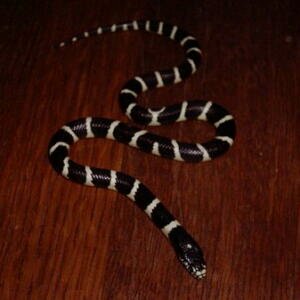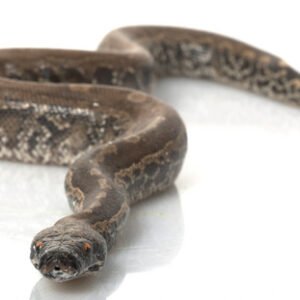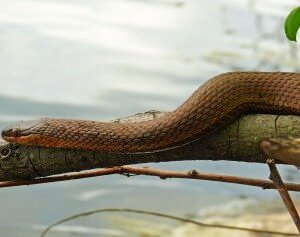Introduction to the Kenyan Sand Boa
The Kenyan Sand Boa, scientifically known as Gongylophis colubrinus, stands out as a remarkable serpent species native to the arid regions of East Africa, primarily found in Kenya and parts of Tanzania. This non-venomous boa has evolved uniquely to thrive in its sandy habitat, showcasing adaptability that allows it to burrow effectively in loose sand, which serves both as a means of camouflage and protection from predators.
In terms of physical characteristics, the Kenyan Sand Boa typically measures between 2 to 3 feet in length, though specimens can occasionally exceed this range. Its body is robust and covered in smooth, shiny scales. Notably, their coloration consists of a striking combination of brown, yellow, and orange hues, with some individuals displaying intricate patterns that further aid in their camouflage against the sandy backdrop. These features distinguish the Kenyan Sand Boa from other species within the boa family, providing it with the essential tools for survival in its environment.
The behavioral traits of this snake species are also noteworthy. The Kenyan Sand Boa is primarily nocturnal, emerging during the cooler hours of the night to hunt for prey, which mainly consists of small rodents, birds, and lizards. This feeding strategy, combined with its ability to remain concealed beneath the sand, highlights its predatory skills. Furthermore, its gentle temperament towards handlers makes it an increasingly popular choice among reptile enthusiasts.
The natural habitat of the Kenyan Sand Boa is characterized by warm temperatures, dry climates, and sandy substrates. This snake has adapted exceptionally well to these conditions, utilizing its burrowing capabilities to navigate its surroundings efficiently. Overall, the Kenyan Sand Boa’s unique traits and adaptations underscore its status as a fascinating species within the larger boa family.
Care and Keeping of Kenyan Sand Boas as Pets
Keeping a Kenyan Sand Boa as a pet requires a well-thought-out approach to ensure their health and well-being. First and foremost, the habitat setup is crucial. A spacious enclosure is recommended, ideally a tank of at least 20 gallons for one adult snake. This environment should mimic their natural habitat; a substrate like aspen shavings or sand provides comfort while allowing for natural digging behavior. Including hides and climbing opportunities enhances their sense of security.
Temperature and humidity are paramount to their care. The basking area should be maintained between 88°F and 92°F, while the cooler side can be around 75°F to 80°F. A heat mat or ceramic heat emitter can provide the necessary warmth. It is essential to monitor humidity levels, keeping them at approximately 40% to 50%. This balance prevents shedding problems and supports overall health. Regularly misting the enclosure can help maintain adequate humidity levels, particularly during shedding periods.
Dietary preferences for Kenyan Sand Boas predominantly include rodents, such as mice or small rats. Juveniles typically feed on smaller prey, while adults can handle larger meals. It is advisable to feed them every 7 to 10 days, with prey items being the same size or larger than the widest part of the snake’s body. Recognizing signs of illness is also important; look for lethargy, abnormal swelling, or skin abnormalities, which could indicate health issues. Regular veterinary check-ups will further ensure the well-being of your Kenyan Sand Boa.
Handling should be done gently and infrequently to decrease stress, especially following feeding. Offering ample hiding spots and maintaining a consistent, low-stress environment will aid in your Kenyan Sand Boa’s adjustment to captivity. After reading this section, prospective owners should feel prepared to establish a nurturing habitat, conducive to a healthy and flourishing life for their pet Kenyan Sand Boa.





